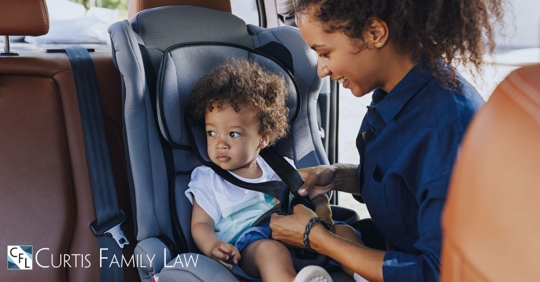Setting up a child custody agreement is often one of the hardest parts of a divorce. Types of custody are typically divided into categories: legal, physical, sole, and joint. In this blog, we’ll go over these four distinct types of custody, and other important details about each that you should know.
Legal Custody
When you have legal custody of your child, it means that you have the right to make certain decisions about their life.
This includes:
- Where they attend school
- Their religious training
- Medical decisions
If both parents have legal custody, they must discuss these topics and make joint decisions. If only one parent has legal custody, they are allowed to make these decisions without consulting the child’s other parent.
Physical Custody
Physical custody is where the child lives. Like legal custody, both parents, or just one parent, can have this type of custody.
Ideally, both parents will be granted physical custody. This ensures that the child can have a relationship with both of their parents, which is important for the child’s benefit.
Sole Custody
As mentioned, parents may have sole legal and/or sole physical custody. This means that they have all of the rights regarding decisions about the child’s life and/or where they live.
Pros and Cons of Sole Custody
If you are considering seeking sole custody rights of your child or children, it’s important to know what comes along with that decision.
Some positives of sole custody include:
- Less conflict due to less communication between you and the child’s other parent
- Makes decision making easier because you are the only one who has to decide
- Increases stability for the child
- Safety for the child if their other parent is unfit to care for them
With sole custody, though, comes some unique difficulties:
- It may be overwhelming to make all of the big decisions about your child’s life on your own
- The child’s relationship with their other parent may suffer
- The child will only have the support of one parent
- Increased financial responsibility
Joint Custody
Parents have joint custody when they both have legal and/or physical custody. Joint custody is far more common than sole custody because it is preferred for the child’s best interests.
Some of the benefits of joint custody include:
- Each parent having strong relationships with the child
- Both parents getting to experience monumental events with the child
- Less feelings of guilt because both parents are equally involved and responsible for the child
- Split financial responsibility
- A consistent routine for the child, as long as both parents follow the plan
- Time for yourself while your child is with their other parent
As you can see, there are numerous benefits to joint custody not just for your child, but also for you.
However, it is important to note some other stressors that may come about when sharing custody:
- If the parents sharing custody do not get along and have to communicate frequently, this can lead to stress for the child and for you
- Your child will have to move from place to place more frequently
- It may be difficult to schedule things or make last-minute plans
Preparing for a Child Custody Case
If you are seeking sole custody or negotiating the terms of joint custody with your ex, it is important to take steps to prepare before this process begins.
- Hire an attorney
- Do your research beforehand so you know what to expect
- Collect any relevant documents or evidence
- Take notes about what you want and what you are willing to sacrifice
- Begin thinking about how a parenting plan may be set up
California Child Custody Attorney
At Curtis Family Law, we have helped numerous clients with a wide variety of custody matters. To learn more about your options for sole or joint legal or physical custody, contact our team today.

